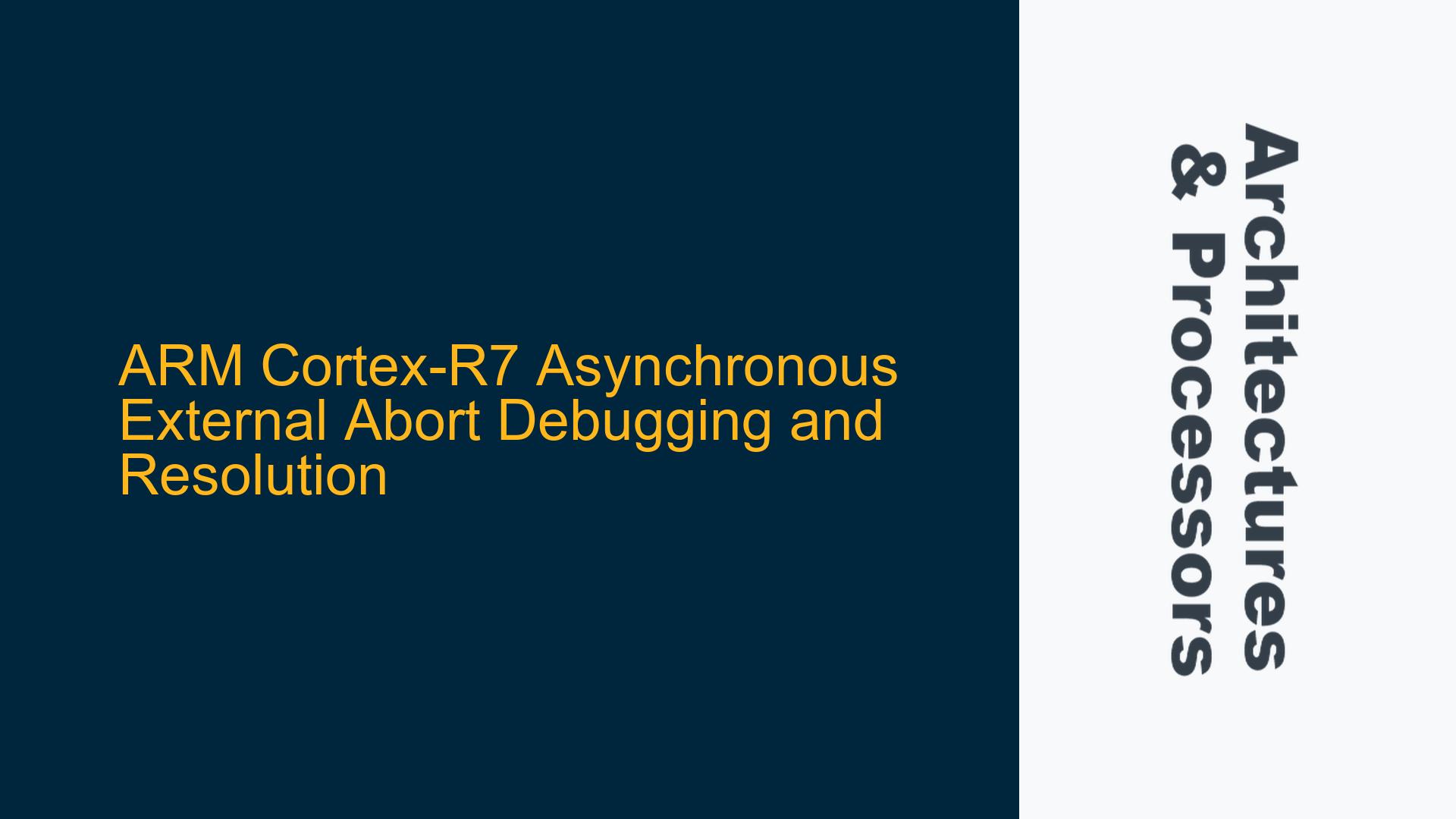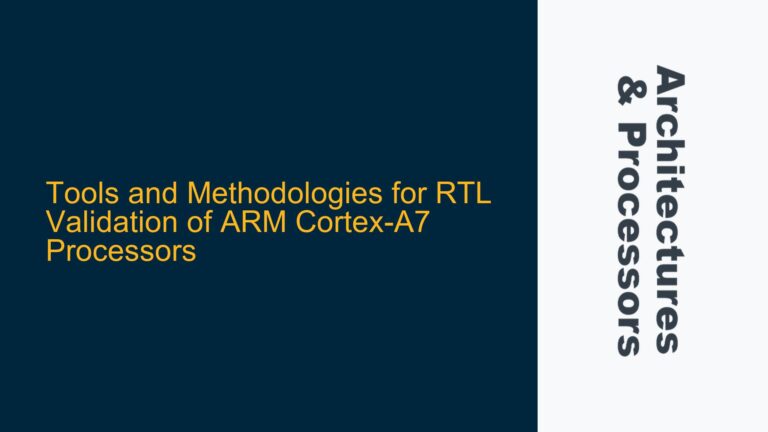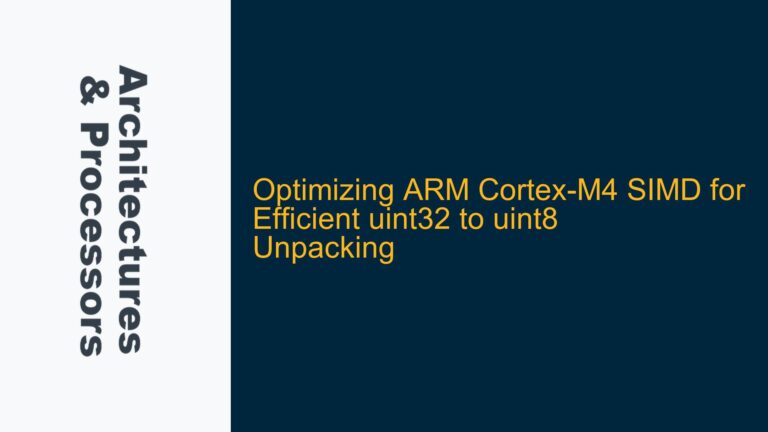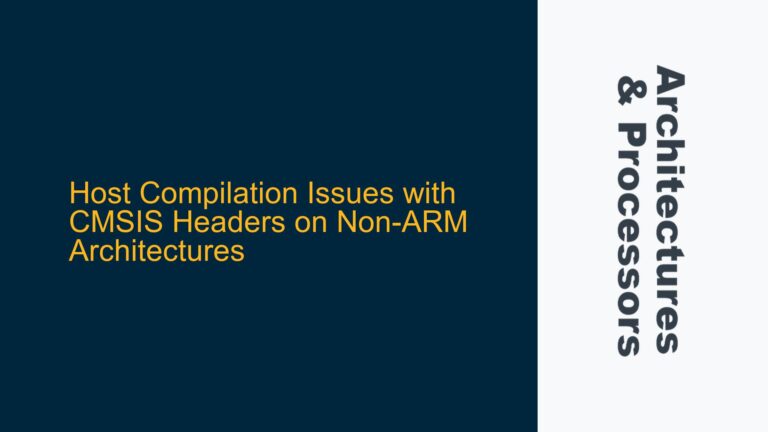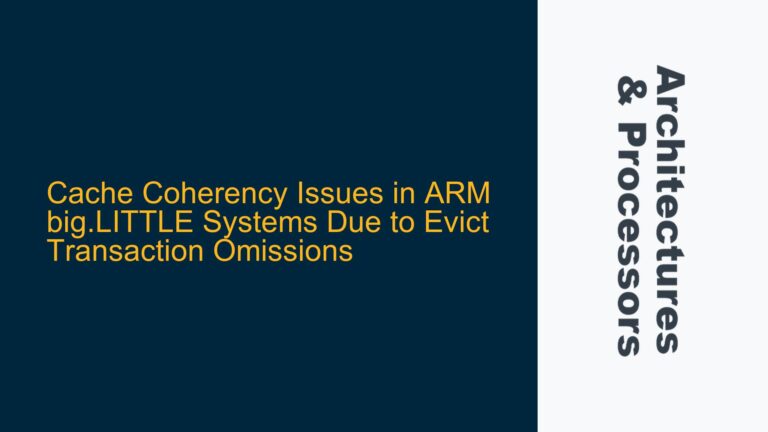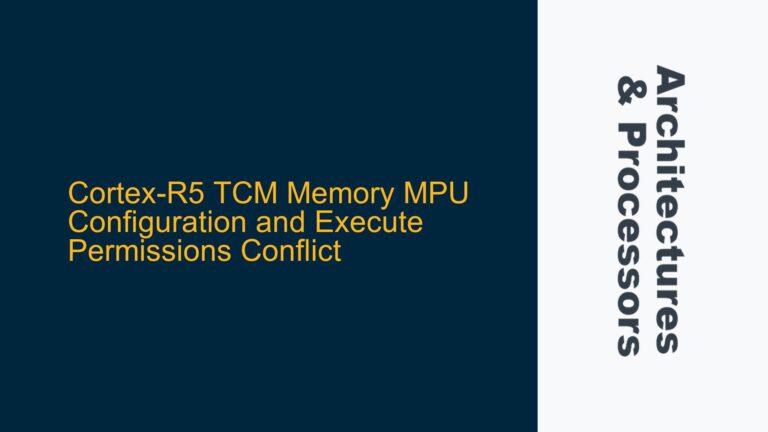ARM Cortex-R7 Asynchronous External Abort Exception Analysis
The ARM Cortex-R7 processor is a high-performance real-time processor designed for safety-critical and deeply embedded applications. One of the critical exceptions that can occur in such systems is the Asynchronous External Abort, which is a type of SError interrupt. This exception is particularly challenging to debug because it is not directly tied to the execution of a specific instruction, making it harder to pinpoint the root cause.
The Asynchronous External Abort is indicated by the DFSR (Data Fault Status Register) with a fault status code of 0b10110. This fault status code signifies that the exception is an external abort, meaning it originates from outside the processor core, such as from a memory controller or a bus interconnect. The key challenge here is that the DFAR (Data Fault Address Register) is often unknown in the case of asynchronous aborts, which complicates the debugging process.
In the context of the Cortex-R7, the SPSR_abt (Saved Program Status Register for Abort mode) value of 0x6000001f indicates that the processor was in ARM state (bit 4 = 1) and that the abort occurred while the processor was in a privileged mode (bits 0-3 = 0b1111). The SP_abt (Stack Pointer for Abort mode) and LR_abt (Link Register for Abort mode) values provide the stack and return address information at the time of the abort, but these values often point to normal software execution flow, making it difficult to trace the exact source of the abort.
The AIFSR (Auxiliary Instruction Fault Status Register) and ADFSR (Auxiliary Data Fault Status Register) are typically used to provide additional information about the cause of the fault. However, in this case, both registers show a value of 0x0, which suggests that the fault is not related to instruction fetching or data access but rather to an external event.
Memory Subsystem and Interconnect Issues Leading to Asynchronous External Aborts
The Asynchronous External Abort in the Cortex-R7 can be caused by a variety of issues related to the memory subsystem and the interconnect fabric. One common cause is a misconfiguration or timing violation in the memory controller, which can lead to an external abort when the processor attempts to access a memory location that is not properly initialized or configured.
Another potential cause is a bus error in the interconnect fabric. The Cortex-R7 uses an AXI (Advanced eXtensible Interface) bus for communication with external memory and peripherals. If there is a protocol violation or a timeout on the AXI bus, the interconnect may generate an external abort. This can happen if a peripheral device does not respond within the expected time frame or if there is a mismatch in the bus protocol.
In multi-core systems, such as those using the Cortex-R7 in conjunction with Cortex-A5x processors, there is also the possibility of cross-core effects. For example, if one core generates a bus error or a memory access violation, it could potentially affect the operation of another core, leading to an asynchronous external abort. This is particularly relevant in systems where the cores share a common memory space or interconnect fabric.
Additionally, power management issues can also lead to asynchronous external aborts. If the power supply to a memory controller or peripheral is unstable or if there is a sudden drop in voltage, it can cause the memory subsystem to generate an external abort. This is especially critical in safety-critical systems where power integrity is paramount.
Debugging and Resolving Asynchronous External Aborts in Cortex-R7 Systems
To debug and resolve Asynchronous External Aborts in Cortex-R7 systems, a systematic approach is required. The first step is to narrow down the code segment where the abort occurs. This can be done by using a debugger to set breakpoints and watchpoints around the suspected area of code. The debugger can also be used to inspect the contents of the DFSR, DFAR, AIFSR, and ADFSR registers to gather more information about the fault.
Once the code segment has been narrowed down, the next step is to analyze the memory subsystem and interconnect configuration. This involves checking the memory controller settings, such as the timing parameters and the initialization sequence, to ensure that they are correctly configured. The AXI bus protocol should also be verified to ensure that there are no protocol violations or timing issues.
In multi-core systems, it is important to check for cross-core effects. This can be done by isolating the cores and running them independently to see if the abort still occurs. If the abort is found to be related to a specific core, further analysis of that core’s memory accesses and bus transactions should be performed.
Power management issues can be more challenging to debug, as they often involve hardware-level analysis. However, it is important to ensure that the power supply to the memory subsystem and peripherals is stable and within the specified operating range. This may involve using an oscilloscope or other measurement tools to monitor the power supply during operation.
In some cases, it may be necessary to implement workarounds or mitigations for asynchronous external aborts. One common approach is to use memory barriers and cache management techniques to ensure that memory accesses are properly synchronized. This can help to prevent timing-related issues that could lead to external aborts.
Another approach is to use error-correcting code (ECC) memory, which can detect and correct certain types of memory errors. ECC memory can be particularly useful in safety-critical systems where data integrity is critical.
Finally, it is important to consider the impact of masking asynchronous exceptions. While masking these exceptions can prevent the system from entering an exception handler, it can also lead to other invisible side effects, such as data corruption or system instability. Therefore, masking should be used with caution and only after thorough testing and analysis.
In conclusion, debugging and resolving Asynchronous External Aborts in ARM Cortex-R7 systems requires a deep understanding of the processor architecture, memory subsystem, and interconnect fabric. By following a systematic approach and using the appropriate tools and techniques, it is possible to identify and resolve the root cause of these aborts, ensuring the reliable operation of the system.
